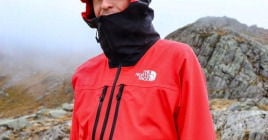How to combat cold feet in winter

What type of winter boots?
What should I look for in a winter shoe?
Winter boots differ from conventional hiking boots in several key respects. Here are the four most notable:
Design and upper height:
To keep your feet warm in winter, you need to insulate them
Winter boots need a high-performance grip
Choosing the right size and fit for your winter boots

A good pair of socks also plays a role in preventing cold feet
To this you can add accessories to prevent your feet from getting too cold
In conclusion, if you have the right products, you can drastically reduce the risk of cold feet.
First and foremost, make sure your footwear has adequate insulation. We offer a range of models specially designed to meet a variety of thermal conditions. Thanks to this, you'll be able to fully enjoy your outdoor activities while staying comfortably warm, even during the wintry months.
.jpg) |
Noé NIVAULT, Buyer at AlpinStore Practical: hiking, cycling, running, crossfit See our favorite products at the bottom of this article, as well as our selection of winter footwear at AlpinStore! |
















